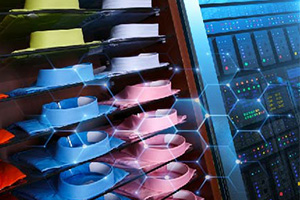2 min read
Adapting to a next-gen workplace requires next-gen technology
Over just the last couple of years, we’ve seen the concept of workplace modernization adopt an entirely new meaning, as the “workplace” as we know it...

Across the business world, there are many IT decision-makers putting a high level of emphasis on workplace modernization. But the concept means different things to different types of organizations. What does it mean in retail? Above all, it’s about creating a smoother experience. Retail employees want their repetitive work tasks to go as smoothly as possible, and customers likewise want their transactions to be seamless.
For all of these reasons, smart retailers in 2020 are turning to edge computing.
These are turbulent times in the retail industry. Customer demand is necessitating a lot of changes – today’s buyers are eager to embrace new technologies like the Internet of Things (IoT), and they expect their retailers to adapt to the changing times. This means retailers must have the technology to keep up. Edge computing has this potential. It’s a new distributed computing paradigm in which data storage and computation power are brought closer to the locations where they’re needed most. In other words, to the edge.
Let’s take a look at three ways this can bring your business into the era of smart retail:
For unlocking all of these benefits and more, one fantastic option is Data Center at the Edge, a new offering from Dell Technologies. With Dell Technologies’ solution for edge computing, your business can infuse agility, intelligence, and flexibility into its retail operations, optimizing your current ways of earning revenue and unlocking new ones to boot.
And at Zones, we have all the IT expertise needed to help you usher in this digital transformation smoothly. In fact, we specialize in Store & Branch Modernization – we work with retail businesses like yours to deploy new solutions wherever and whenever they’re needed. Whether it’s the latest edge computing technologies from Dell Technologies or anything else on your IT wish list, we’re here to deliver for you.
Want to keep exploring our Dell Technologies offerings? We can help with that.


2 min read
Over just the last couple of years, we’ve seen the concept of workplace modernization adopt an entirely new meaning, as the “workplace” as we know it...

Back in the old days, when employees relied exclusively on desktop PCs for completing their everyday work tasks, it was much easier for corporate IT...

1 min read
In this new era we’re all living in, workplace modernization means a little something different for everyone. It’s not sufficient for IT just to give...